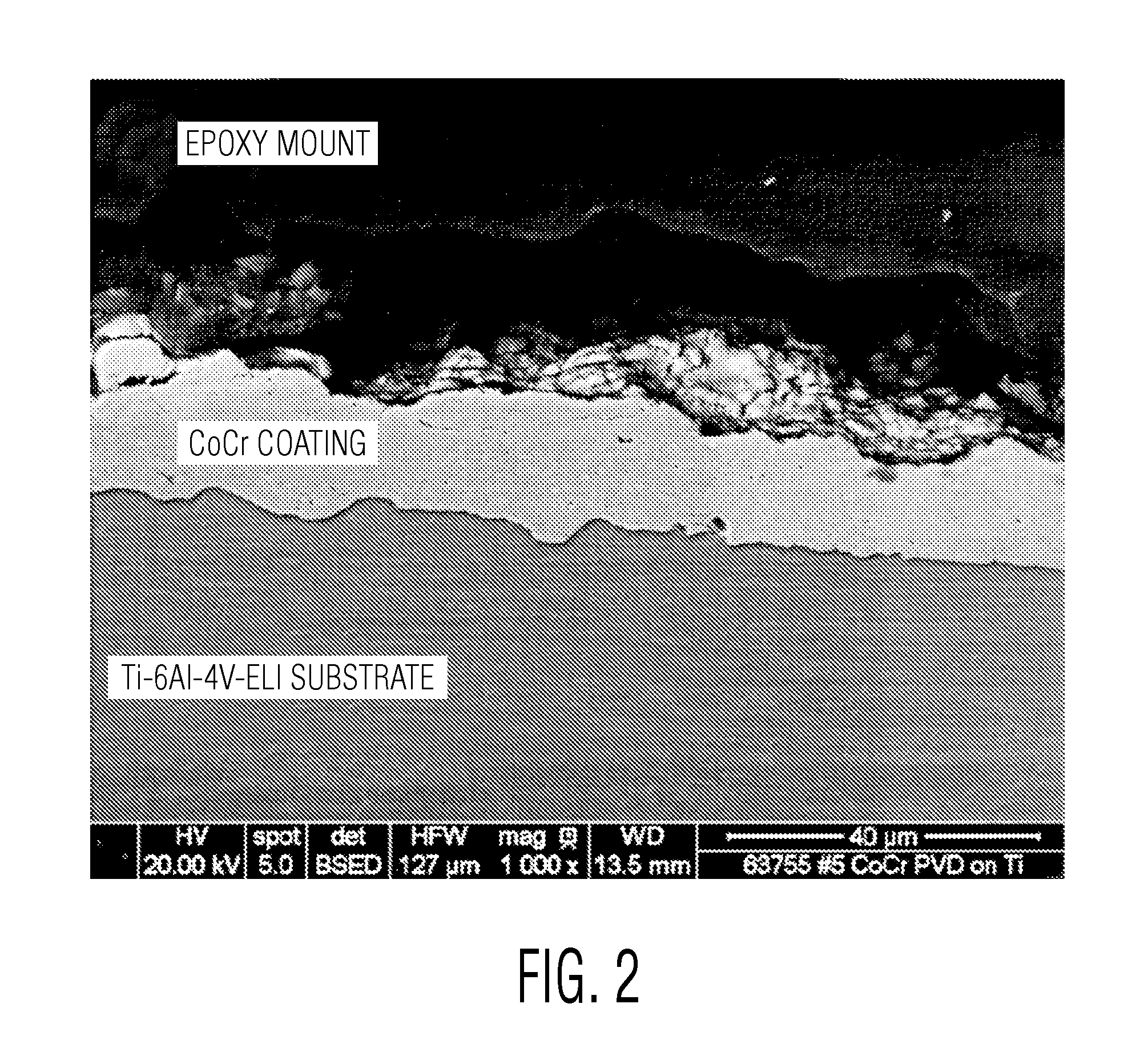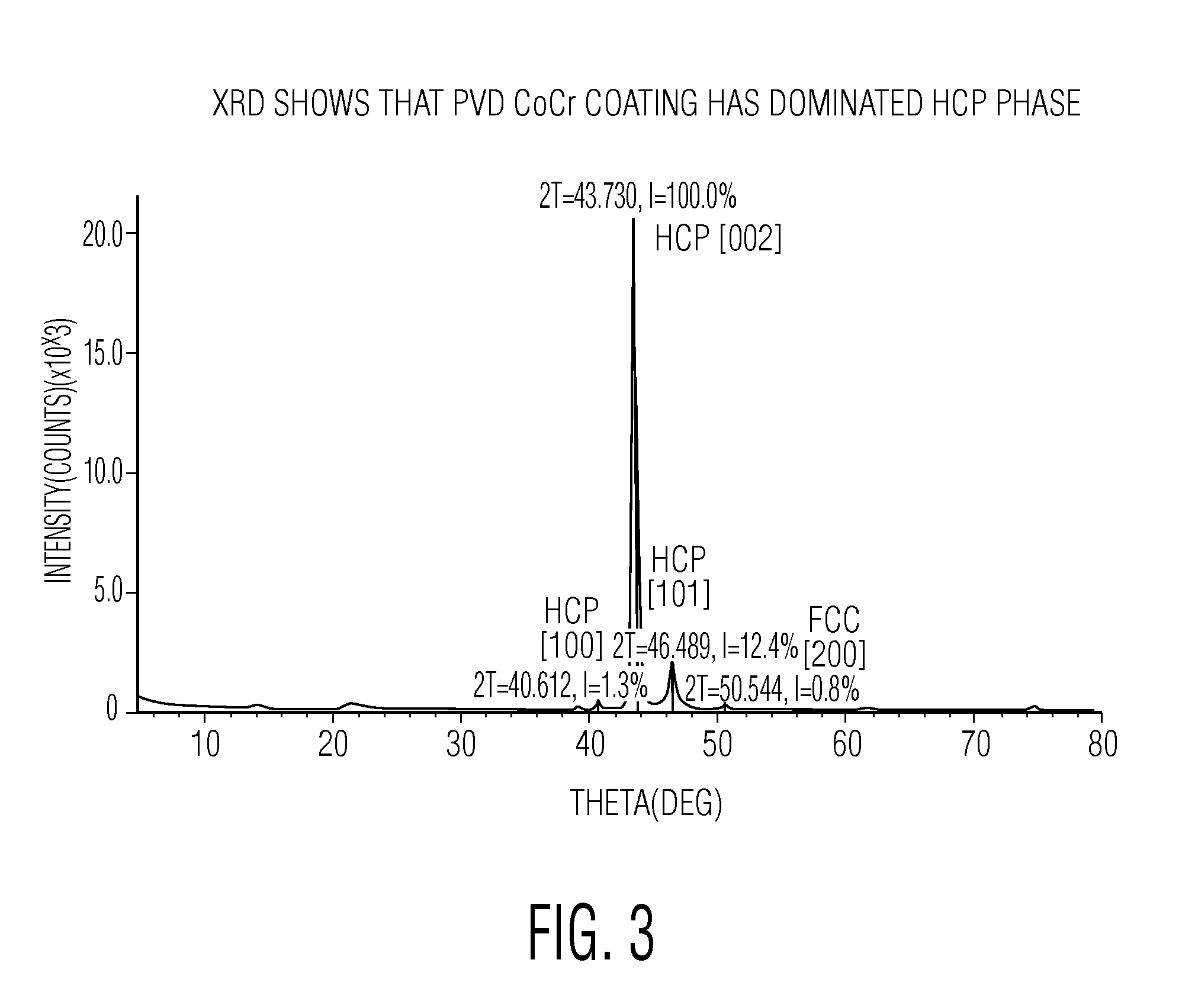Cobalt chrome coated titanium implant
- Summary
- Abstract
- Description
- Claims
- Application Information
AI Technical Summary
Benefits of technology
Problems solved by technology
Method used
Image
Examples
Embodiment Construction
[0037]Referring to FIG. 1, there is shown the chemical composition of the PVD cobalt-chrome molybdenum coating of the present invention compared to a forged cobalt-chrome molybdenum implant material meeting the requirements of ASTM 1537. It can be seen that in all of the top five components of the alloy the coating of the present invention is within the ASTM specification requirements. The analysis of the CoCrMo coating was performed both chemically and by energy-deispersive x-ray spectroscopy.
[0038]Referring to FIG. 2 there is a scanning electron microscope photograph of a cross-section of the coating which was approximately 23.5 microns thick. The substrate was commercially available titanium alloy Ti6Al4VELI.
[0039]Referring to FIG. 3 there is an x-ray defraction pattern showing that the PVD coating of the present invention has a very high percentage of hexagonally-close-packed phase. This is exactly the opposite of standard forged cobalt-chrome molybdenum implant alloys which hav...
PUM
| Property | Measurement | Unit |
|---|---|---|
| Grain size | aaaaa | aaaaa |
| Grain size | aaaaa | aaaaa |
| Length | aaaaa | aaaaa |
Abstract
Description
Claims
Application Information
 Login to View More
Login to View More - R&D
- Intellectual Property
- Life Sciences
- Materials
- Tech Scout
- Unparalleled Data Quality
- Higher Quality Content
- 60% Fewer Hallucinations
Browse by: Latest US Patents, China's latest patents, Technical Efficacy Thesaurus, Application Domain, Technology Topic, Popular Technical Reports.
© 2025 PatSnap. All rights reserved.Legal|Privacy policy|Modern Slavery Act Transparency Statement|Sitemap|About US| Contact US: help@patsnap.com



